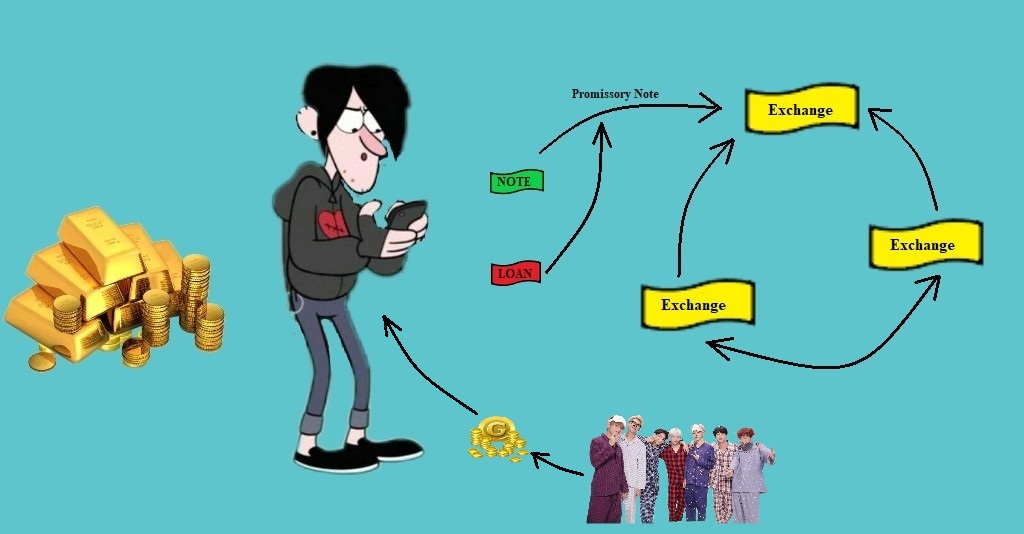1.1. Process of Money Creation
We can explain the process of money creation, initially, with the help of the following diagram:

a. Earlier, people used to deposit their gold with the goldsmiths for its safekeeping, and they would issue a promissory note in return, against which they would receive the amount of gold when presented again to the goldsmith.
b. Since, this note was backed by the gold reserve held by the goldsmiths, and could be easily cleared for the gold; it started trading in the market for the value of the gold. These promissory notes were traded in exchange for goods and services in the market.
c. This is how the paper currency became a proxy for the precious metal, as an agent of trade.
d. As more and more promissory notes were emerging, these goldsmiths started emerging as the banks.
e. And, since the gold was mostly lying in their vaults and were not encashed, they started giving the same as a loan to the people, printing new promissory notes.
f. This resulted in more promissory notes running through the economy than the gold reserve available for them. Some fraction or percentage of the gold was issued as the loan again. Thus, this system was called the fractional or reserve banking
1.2. Reserve Banking System
a. The amount of money in the banking system is a function of the reserve requirement, which is the percentage of deposited funds that a bank must keep on hand.
b. As demand deposits are created and a portion of these funds are lent by banks, money is created.
c. The amount of money in the banking system is a function of the reserve requirement:
i. The higher the reserve requirement, the lesser are the funds available to be lent.
ii. The lower the reserve requirement, the more are funds available to be lent.
d. For example, if a bank accepts the deposit of $ 100 million and the reserve requirement is 10% then:
i. It will keep $ 10 million in its hands, as a reserve and lend the rest, i.e. $ 90 million.
ii. The receiver of the funds will use the same for purchases etc. and deposit the same with his bank (i.e. second bank).
iii. The second bank will keep a reserve of $ 9 million (i.e. 10% of $ 90 million) and lend the rest, i.e. $ 81 million to some other receiver.
iv. This person will, in turn, deposit the money to the third bank, which again keeps the 10% as a reserve and lend the rest.
v. This process keeps on repeating until the time there is a negligible amount of money that could be lent.
e. Thus, it can be seen from the above example, that there is way more amount of money in the market that is circulating than there are reserves for it.
f. The effect of reserve requirement on the money supply is summarized with the money multiplier.
| Money Multiplier = 1 / (Reserve Requirement) |
i. Thus, if the reserve requirement is 5%, the money multiplier is 20 times, and
ii. If the reserve requirement is 10%, the multiplier is 10 times.
1.3. Quantity Theory of Money
a. The quantity theory of money states that total spending is proportional to the quantity of money.
b. The quantity equation of exchange is:
M × V = P × Y
where
M = Money supply
V = Velocity of the circulation of money, i.e. the number of times money changes hands during a year.
P = Average price level
Y = Real output
c. In other words, we can write the above equation as:
i. The amount of money used to buy the goods and services in an economy equals the monetary value of the output.
ii. Also, since we assume that the V is constant, then the total spending (i.e. P×Y) is proportional to the money supply (i.e. M).
d. Money neutrality is a situation in which an increase in the money supply (M) will not affect output (Y) or the velocity of money (V), but it will affect the price level, P.